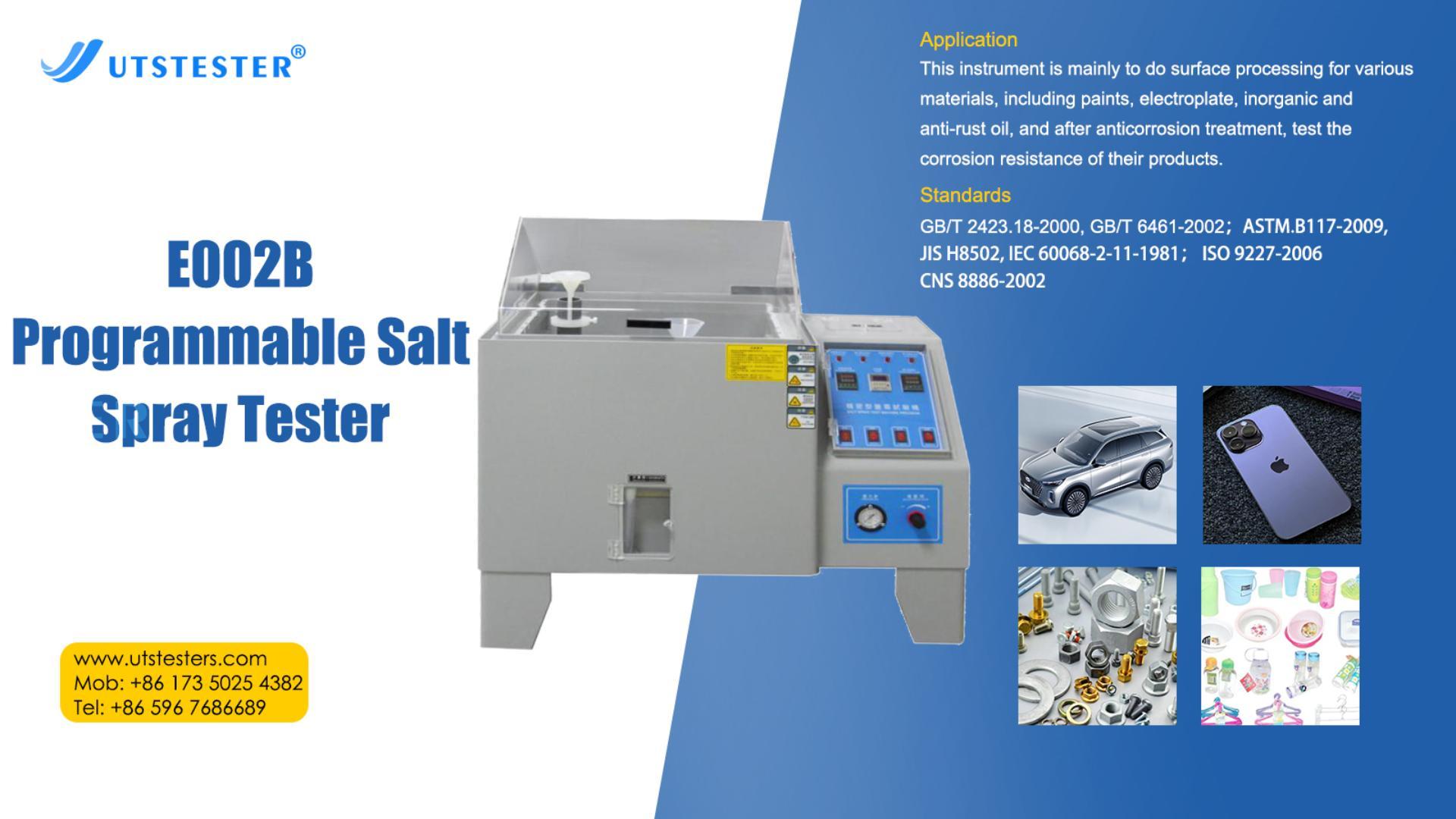Соль — одно из самых распространённых соединений в мире, её можно обнаружить в океанах, атмосфере, на поверхности суши, в озёрах и реках. Когда соль попадает в атмосферу в виде мельчайших капель, она образует соляной туман, основным компонентом которого является хлорид натрия.
1. Что такое испытание солевым туманом?
Испытание в соляном тумане используется для оценки стойкости изделий или металлических материалов к солевой коррозии. Результаты испытания в соляном тумане используются для определения качества продукции, а их корректность и обоснованность являются ключом к точному измерению стойкости изделий или металлов к солевой коррозии.
2. Классификация методов испытаний в соляном тумане Искусственные испытания в соляном тумане включают три различных метода испытаний с различными требованиями.
(1) Испытание в нейтральном солевом тумане (NSS-тест) – это самый ранний и в настоящее время наиболее широко применяемый метод ускоренных коррозионных испытаний. В качестве раствора для опрыскивания используется 5%-ный раствор хлорида натрия с нейтральным значением pH (6,5–7,2). Температура испытания составляет 35 °C, а требуемая скорость осаждения соляного тумана – 1–2 мл/80 см3/ч.
Область применения: металлы и сплавы, металлические покрытия, конверсионные покрытия, анодированные покрытия и органические покрытия на металлических подложках.
(2) Испытание в солевом тумане уксусной кислоты (ASS-тест) было разработано на основе испытания в нейтральном солевом тумане. Оно включает добавление некоторого количества ледяной уксусной кислоты к 5%-ному раствору хлорида натрия, что снижает pH раствора примерно до 3, делая его кислым и превращая нейтральный солевой туман в кислый. Скорость коррозии в этом испытании примерно в три раза выше, чем в NSS-тесте.
Область применения: декоративные покрытия медь+никель+хром или никель+хром, анодированные пленки на алюминии, органические покрытия.
(3) Испытание на коррозию в солевом тумане уксусной кислоты, ускоренное медью (CASS), – это недавно разработанный за рубежом метод быстрого испытания на коррозию в солевом тумане. Температура испытания составляет 50 °C, и в солевой раствор добавляется небольшое количество соли меди (хлорида меди) для интенсивного коррозионного воздействия. Скорость коррозии в этом случае примерно в 8 раз превышает скорость коррозии в тесте NSS.
Область применения: декоративные покрытия медь+никель+хром или никель+хром, анодированные алюминиевые пленки, органические покрытия.
3. Сколько времени требуется для перехода от испытания в солевом тумане к воздействию естественной среды?
На основании существующих отраслевых стандартов (теоретические значения) соотношение между 24-часовым испытанием в соляном тумане и воздействием естественной среды выглядит следующим образом:
Испытание в нейтральном солевом тумане в течение 24 часов ⇌ 1 год воздействия естественной среды
Испытание в соляном тумане уксусной кислоты в течение 24 часов ⇌ 3 года воздействия естественной среды
Ускоренное испытание солевого тумана уксусной кислоты с использованием медной соли в течение 24 часов ⇌ 8 лет воздействия естественной среды
Единого стандарта продолжительности испытания в соляном тумане не существует. Продолжительность испытания следует выбирать гибко, исходя из типа продукта, отраслевых стандартов и целей испытания. Испытание подразделяется на три основные категории:
(1) Краткосрочное тестирование (24–72 часа)
Назначение: Экспресс-проверка базовой коррозионной стойкости материалов или покрытий, таких как корпусы малогабаритной бытовой техники, разъемы и т. д.
Пример: Открытое автомобильное оборудование: 24-часовое испытание в нейтральном солевом тумане (NSS); Заводское испытание электронных компонентов: 24–48 часов.
(2) Среднесрочное тестирование (72–168 часов)
Цель: Оценка стойкости в умеренных коррозионных средах, таких как автомобильные компоненты и наружные строительные материалы.
Пример: фурнитура (двери, окна, перила): 96–168 часов; кронштейны для монтажа фотоэлектрических систем: 72–240 часов.
(3) Длительное тестирование (более 168 часов)
Назначение: Проверка надежности в экстремальных условиях (например, морская техника, авиакосмическая промышленность) продолжительностью до 1000–2000 часов.
Примеры: компоненты кораблей: от 500 часов, некоторые превышают 2000 часов; крепежные элементы в аэрокосмической технике: 480–1000 часов испытаний в нейтральном или переменном солевом тумане.
Продолжительность испытания в соляном тумане — динамический параметр, требующий гибкого проектирования с учётом области применения продукта, окружающей среды и стандартов. Краткосрочные испытания (24 часа) подходят для выборочных проверок на производственной линии, в то время как испытания на уровне тысячи часов служат своего рода «контролёрами качества» для морского и аэрокосмического оборудования. Разумное планирование времени позволяет избежать лишних затрат на испытания и точно выявить недостатки защиты от коррозии.

Электронная почта:
hello@utstesters.com
Прямой звонок: + 86 152 6060 5085
Тел.: +86-596-7686689
Веб:
www.utstesters.com
 +86 152 6060 5085
+86 152 6060 5085





 English
English русский
русский español
español português
português










 hello@utstesters.com
hello@utstesters.com hello@utstesters.com
hello@utstesters.com +86 152 6060 5085
+86 152 6060 5085 +8615260605085
+8615260605085